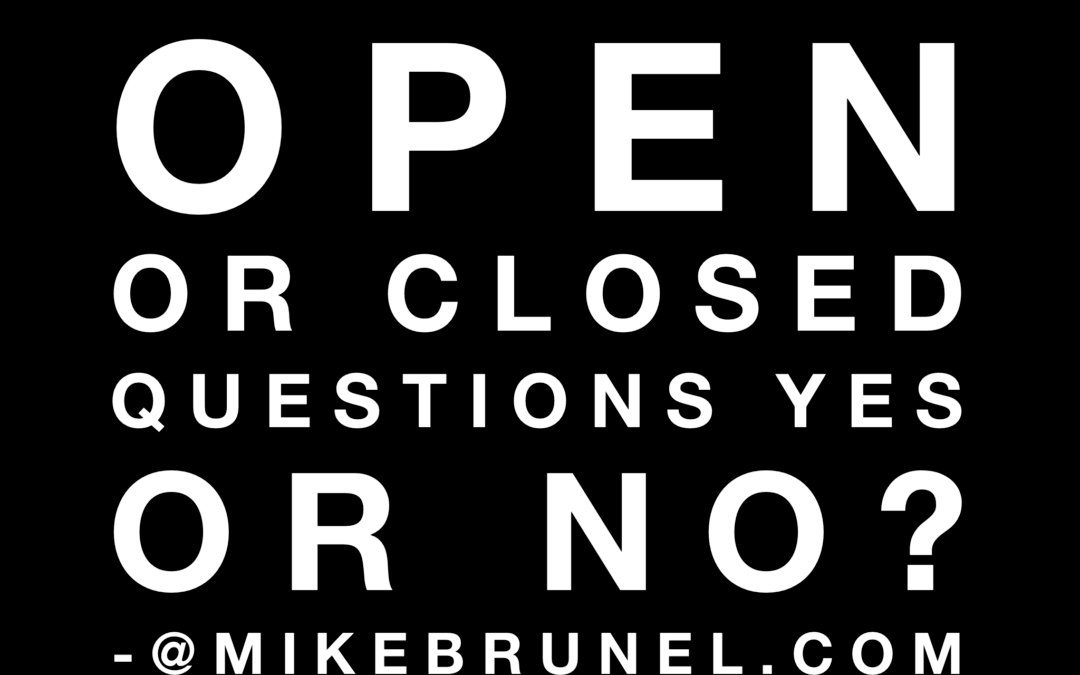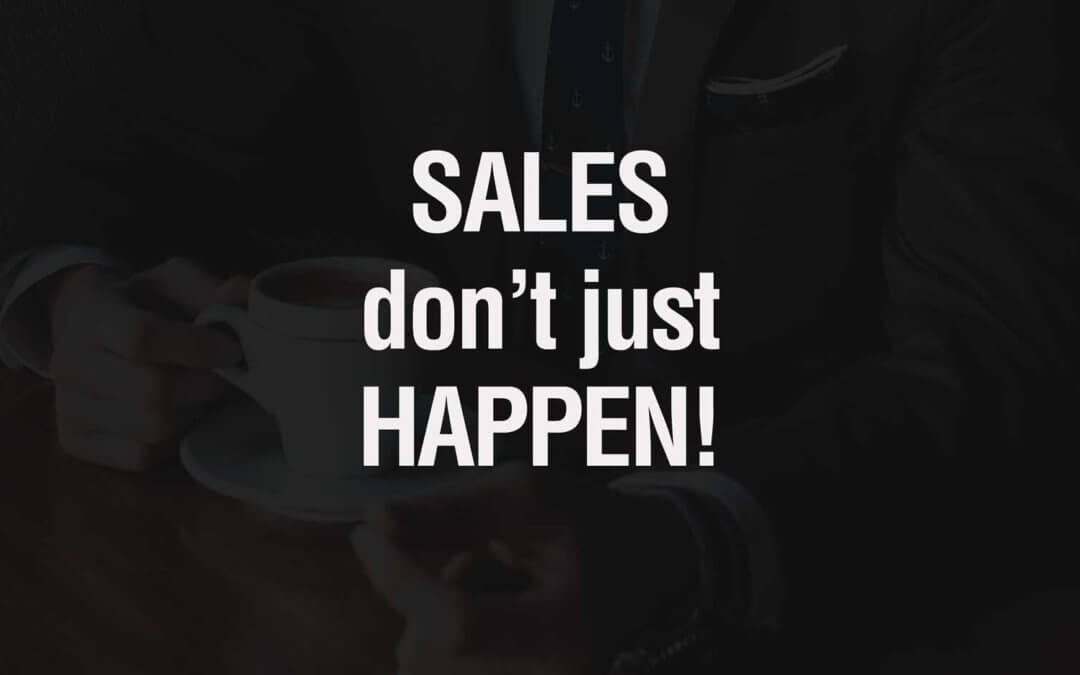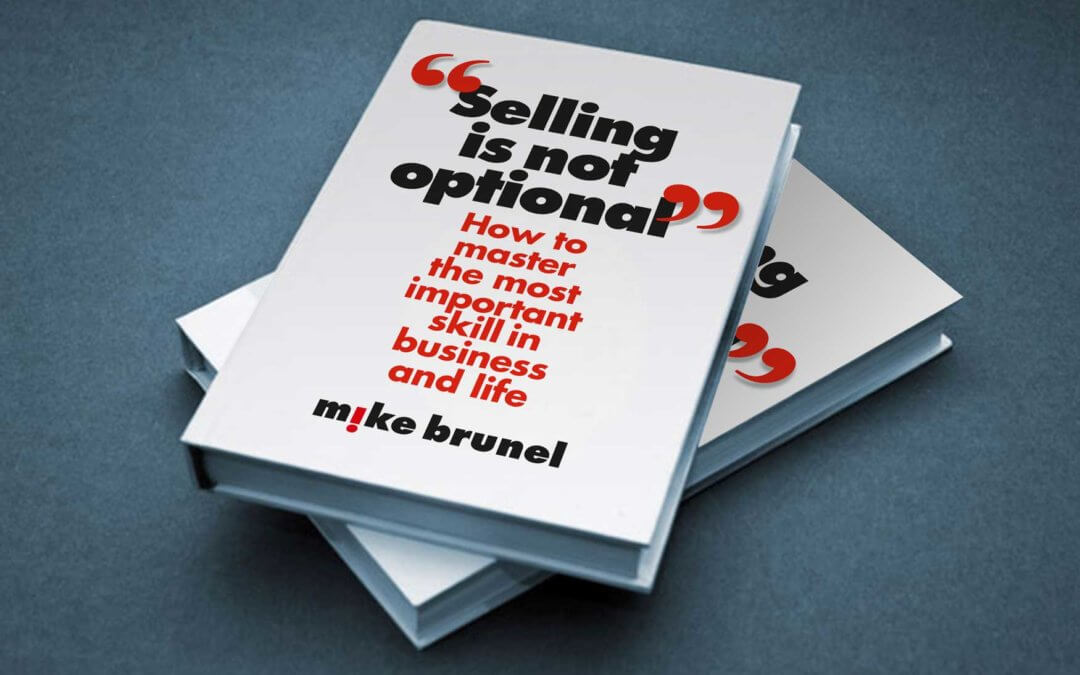
by Mike Brunel | Oct 30, 2023 | Motivation and Mindfulness, Sales
“Transform your sales approach with our unique training, focusing on open-ended questions to boost engagement and close deals effectively
Introduction: Unleashing the Joy of Selling
How can we empower our sales team to embrace the joy of selling? Transforming the sales process into an enjoyable experience starts with cultivating the art of asking open-ended questions.
One effective exercise that we can implement in our training sessions is the “What’s in my Pocket?” activity, introduced to me by Stephen Pead, a cherished colleague and friend at NRS Media.
Understanding Open vs. Closed Questions
Before diving into the exercise, it is crucial to ensure clarity on what differentiates an open question from a closed one. Open questions are invitations for expansive conversations, whereas closed questions typically prompt a short “yes” or “no” response.
The “What’s in My Pocket?” Exercise
In this engaging exercise, the trainer conceals an unconventional object in their pocket, steering clear of predictable items such as keys or a handkerchief. Instead, opt for something slightly more unexpected, like a wedding ring or a bottle top. The goal is to encourage curiosity and thoughtful questioning.
Closed Questions: A Limited Approach
Starting with closed questions, instruct the team to pose ten inquiries, to which you can only respond with “yes” or “no”. Experience shows that this method rarely leads to the correct answer.
Open Questions: Unleashing Potential
Transitioning to the second part of the exercise, invite the participants to ask ten open-ended questions. These inquiries encourage elaboration and provide the salespeople with a greater context, increasing the likelihood of them deducing the hidden object correctly within just a few attempts.
Examples and Impact
For instance, a closed question might be, “Is the object in your pocket something commonly used?”
This query restricts the trainer to a brief and limited response. Conversely, an open-ended question such as, “How does the object in your pocket serve its purpose?” invites a detailed answer, providing valuable insights and leading to a more fruitful discussion.
Embracing Vulnerability and Leadership
The power of open-ended questions cannot be overstated. They have the potential to transform conversations, uncovering needs and desires that might otherwise remain hidden. However, it’s not uncommon for individuals to hesitate, fearing that their questions might expose vulnerability or uncertainty.
Training for Success
Herein lies the challenge and the opportunity for sales professionals: to embrace the role of a thoughtful leader, adept in the art of inquiry. By modelling this behaviour and investing time in training, we can instil confidence in our team and ensure they understand that not every client interaction will result in an immediate sale.
Conclusion: Building Meaningful Connections
Initiating meaningful conversations and establishing rapport are critical steps in aligning with potential customers. This skill set, which hinges on distinguishing between open and closed questions, is a prerequisite that our sales team should master well before engaging with clients.
By fostering an environment that values and encourages open-ended questioning, we pave the way for more meaningful interactions, ultimately enhancing the sales experience for both our team and our customers.
Mike (Make your questions be open ones) Brunel
PLUS, whenever you are ready…here are four ways I can help you grow YOUR business.
1. Join my free Facebook group – Sales Mindset Inner Circle
My favourite thing to do is show you what’s working right now. It’s not as good as being a client, but it’s close.
2. Take advantage of a FREE 45-minute consultation
Need some sales support? Make an appointment, and let me take you through the past, present, and future templates.
3. Work with me one-on-one
If you want to take your product or service from face-to-face to virtual selling, then I have a product that may be able to help you. You can get started for as little as $250 a month. If you’re interested then email mike@mikebrunel.com and put ‘Virtual Selling’ in the subject line…tell me a little about your business and I’ll get you all the details.
4. Finally, grab my new digital book on ‘How to get a predictable sales system into your business without coming across as salesy’
Click the link: https://www.salesblueprintbook.com/book
Cheers
Mike
by Mike Brunel | Oct 23, 2023 | Motivation and Mindfulness, Sales
Start a Conversation with Yourself
Introduction:
A successful sales relationship relies heavily on the continuous dialogue you maintain with your customers.
Interestingly, this dialogue begins with the conversation you have with yourself.
When you understand how to communicate with yourself, your ability to listen to others improves significantly.
Think about your own “self-conversation in sales”
I realized this crucial lesson years ago during my tenure at a media company.
I was sent to a conference in Houston, Texas, shortly after ending a long-term relationship.
I’ll admit, I felt somewhat disoriented at the time.
The Catalyst: Discovering Personal Power.
In my hotel room, I stumbled upon an infomercial featuring a remarkably youthful Tony Robbins, who introduced something he called “Personal Power.”
Curiosity piqued, and I made the purchase.
Upon my return to New Zealand, a box bearing Tony’s signature awaited me.
Embracing Knowledge and Self Improvement.
I eagerly consumed the material, reigniting my passion for learning and providing tools to enhance my mindset and internal dialogue.
I diligently completed all the exercises and maintained a journal.
One invaluable skill I acquired was the art of asking myself meaningful questions.
This practice began with journal entries and eventually led to a transformative focus, yielding significantly improved results.
I am a great believer that one’s life often correlates with the nature of the questions one consistently poses to themselves.
When you prime your mental faculties to seek specific types of answers, your perspective shifts accordingly.
Asking, “What’s wrong with me?” may lead you to conclude that you are inadequate or undeserving of success.
Conversely, questions like “How can I use this experience to positively impact others?” encourage more constructive and empowering responses.
This shift in questioning enables you to discern a way forward, as opposed to feeling trapped at a dead end.
The Art of Asking Quality Questions.
Here are some examples from my past journal entries:
- What am I currently happy about in my life?
- Why does this particular aspect bring me joy, and how does it make me feel?
- What excites me the most in my life right now?
- What is the source of this excitement?
- For what am I most grateful in my life?
- To what am I currently devoted in my life?
Conclusion: Enjoying the Journey of Self conversation.
These questions illuminated the fact that positive inquiries foster a growth mindset, ultimately leading to more favourable outcomes.
By focusing on constructive and positive questions, your brain actively works on finding answers, even when you’re not consciously thinking about them.
Consider the vast difference between asking, “Why does this always happen to me?” versus “How can I learn from this experience?” These two questions set entirely different courses for the steps you take next.
Develop a list of empowering questions and integrate them into your daily routine, especially if you’re seeking a significant change in your life.
Over time, this practice not only transforms your self-dialogue but also the way you engage with your clients.
Enjoy the journey of selling, and remember the power of having the right conversation with yourself.
Have a good week
PLUS, whenever you are ready…here are four ways I can help you grow YOUR business.
1. Join my free Facebook group – Sales Mindset Inner Circle
My favourite thing to do is show you what’s working right now. It’s not as good as being a client, but it’s close.
2. Take advantage of a FREE 45-minute consultation
Need some sales support? Make an appointment, and let me take you through the past, present, and future templates.
3. Work with me one-on-one
If you want to take your product or service from face-to-face to virtual selling, then I have a product that may be able to help you. You can get started for as little as $250 a month. If you’re interested then email mike@mikebrunel.com and put ‘Virtual Selling’ in the subject line…tell me a little about your business and I’ll get you all the details.
4. Finally, grab my new digital book on ‘How to get a predictable sales system into your business without coming across as salesy’
Click the link: https://www.salesblueprintbook.com/book
Cheers
Mike

by Mike Brunel | Oct 17, 2023 | Sales
Is Sales Success Dependent on the Attitude of the Salesperson or the Prospect?
Across the globe, I’ve been privy to inspiring tales of how salespeople are genuinely transforming lives.
Many businesses worldwide confess to feeling the weight of not meeting their targets.
“The market has become challenging”, “It’s not what it used to be”, “People just aren’t spending like before”—the list of reasons seems endless.
However, I firmly believe this perception is flawed.
Offering genuine value and demonstrating a commitment to your customers will invariably lead to sales.
THE MONEY IS STILL OUT THERE.
While monetary flow might vary, the truth remains that money is always in circulation.
It might shift from one business to another, but records indicate that retail revenue is surging in countries like NZ and Australia with some categories.
Businesses need to adapt and reconsider the channels and methods their clients use to make purchases.
It’s undeniable: traditional media like television no longer dominate our lives. The internet reigns supreme.
Potential customers often research your products—and those of your competitors—long before they set foot in your store or establishment.
Information is Power.
I’ve observed a common trend among thriving businesses during my interactions across the world.
They consistently train their employees, keeping them informed about new products or services, and empowering them to make decisions. Regular training sessions, often weekly, are the norm.
A lack of product knowledge can be detrimental.
Consider the experience of walking into a store and encountering an employee who seems clueless about their products. Such encounters erode trust and confidence, prompting customers to look elsewhere.
The Secret to Amplified Sales?
Being informed about a product not only provides tangible knowledge but also confers an intangible benefit to the salesperson: a boost in attitude and confidence. This newfound confidence is palpable to customers.
Boost Your Team’s Product Knowledge with These Exercises:
- Pop Quiz: Jot down 10 benefits of your top-selling products and identify what you believe is the most crucial advantage for customers.
- Knowledge Test (One-on-One or Team Meeting): Quiz each team member on those products. This can be a written examination or part of their regular performance reviews.
Implementing these straightforward exercises can provide your business with a competitive edge and potentially increase your share of the market revenue.
Wishing you a successful day in sales!

by Mike Brunel | Oct 9, 2023 | Presentation, Sales
This week, I want to share a story about a father and son and the importance of having an open mind.
It is an excerpt from my book.
The Newspaper Story
In a fictional scenario, a man is busy working at home when his young 5-year-old child enters his study with the enthusiasm that children have in abundance.
The child asks his Dad if they can go to the park.
The Dad, in the middle of his work, tries to resist his son’s requests, but the child persists.
With frustration, the Dad looks around him and lifts up a newspaper, opening it to a double-page picture of a map of the world.
A Map with a Secret
He then pulls out the map, tears it up into handfuls of small pieces, and gives them to his son.
He says, “After you put together this map of the world, then we will go to the park.”
His son takes the pieces of the newspaper in both hands and scurries eagerly over to the other side of the room, setting to work without delay.
The Dad knows that his son has no idea what a map of the world looks like and thinks it will take him ages to complete the task.
So, he gets back to his work.
Five minutes later, his son runs across to his Dad and says, “I finished! Can we go to the park now?”
It Was Easy
The Dad thinks his son is making it up, but on the floor is the finished makeshift jigsaw of the map of the world.
“How did you finish this so quickly?” he asks his son.
“It was easy, Daddy,” says the boy as he turns over the pieces of the jigsaw one at a time.
On the other side of the world map is a photograph of a man.
“You see, when you put the man back together, the whole world falls into place.”
The Moral of the Story
The moral of the story is that it is how you look at things.
You see what you want to see, and sometimes you have to open up (Growth Mindset).
I challenge myself every day to approach the sales profession with a different perspective.
Have a great time selling your stuff.
Mike
Chicken Soup for the Soul – Jack Canfield – Mark Victor Hansen
P.S.
If you would like a FREE Download of my book “Selling is not optional”- How to Master the Most Important Skill in Business and Life.
Click on the link and it’s yours.https://products.mikebrunel.com/selling-is-not-optional-digital-download
by Mike Brunel | Oct 2, 2023 | Sales, Strategy
“Size Does Matter when it comes to selling.
For valuable insights into distinguishing between small and large sales, consider reading Neil Rackman’s best-selling book, ‘Spin Selling.’ Several years ago I was introduced to it and found it very useful when selling larger offers.
“Distinguishing Between Big and Small Sales”
Rackman emphasises the fundamental differences between a large sale and a big sale.
He believes each requires distinct closing techniques.
Recognising these differences can save you significant time and increase your chances of success when approaching prospects.
What Defines a Small Sale?
In ‘Spin Selling,’ Rackman shares an illustrative anecdote. While waiting for a connecting flight at an airport store, he spontaneously purchases a versatile Swiss Army knife for just $15.
The time elapsed between recognising the need and making the purchase was mere seconds, highlighting a characteristic of small sales – swift transaction times.
Additionally, small sales typically involve minimal risk.
Rackman’s $15 expenditure on the army knife presented minimal financial exposure.
Small sales often stem from impulsive decisions driven by emotional motives.
In Rackman’s case, practical necessity did not drive the purchase; it was an emotional impulse.
How Does a Large Sale Differ?
Now, consider a different scenario: meeting a prospective client who may potentially invest several thousand dollars in your company.
To secure such a substantial sale on the first call, you must exercise patience and anticipate a more extended sales process.
Large sales usually entail a longer transaction timeline, as the need develops over time.
To help you recognise the difference, here are some key indicators:
- Multiple Decision Makers: In larger sales, there are typically more decision-makers involved. Be prepared to engage with a team of more than one decision-maker.
- In-Depth Problem Solving: Large sales require you to ask more specific questions about the customer’s problems and collaborate on finding comprehensive solutions.
- Rational Decision-Making: The decision-making process for larger sales tends to be more rational and deliberative on the part of the customer or client.
Understanding the way your customers think, the impact of their decisions on their own career
Try this:
Create a list of your clients who have engaged in large-scale purchases, categorised by the size of the sale. Compare this list with the criteria outlined above.
Be open to thinking differently and have patience.
Happy selling, everyone!
Mike
Have a great week selling your stuff.
Mike
PLUS: WHENEVER YOU’RE READY…Here are 4 ways I can help you make more sales in your business – big or small.
1. Want to become a Sales Mindset Blueprint Member? You get access to an exclusive coaching session with me and full access to my sales programme every month. Get the deets here.
2. Try the new ‘7 Days to Sales Success’ framework. Make more sales in 7 days—the framework of everything you need to start making more sales in your business. The Sales Success Framework is based on a simple 7-day challenge. Click here to learn how to grow your business by making more sales.
3. Join our private Facebook group – The Sales Mindset Inner Circle. Get all the latest up-to-date sales ideas. Every week, we do Facebook Live updates on all things sales. Tips, ideas, free coaching, and much more. Join me by clicking here
4. Could you work with me one-on-one? If you’re a small or large business owner or in professional services, you might have a few strategies, tactics and tools away from doubling your lead flow, revenue and impact. Please jump on a FREE 30-minute brainstorming call with me by clicking here.



